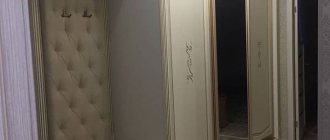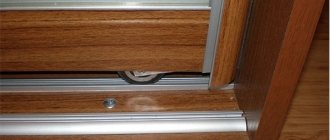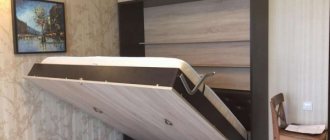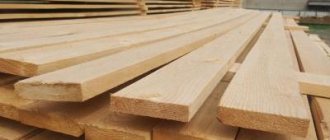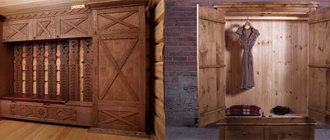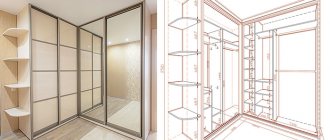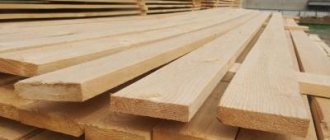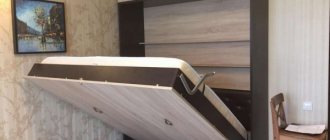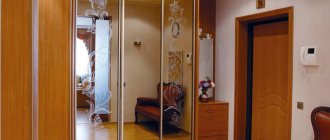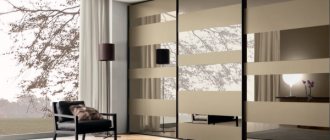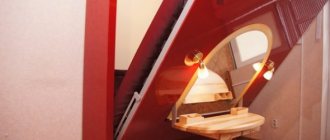The oven is one of the most important elements that any kitchen is equipped with. Classic stoves, which were a single module consisting of a hob and an oven, are gradually being replaced by built-in appliances. Such designs have many advantages over traditional models. When purchasing furniture, it is important to understand the options and features of these products on the market.
Built-in oven cabinet
What are the benefits of built-in designs in the kitchen?
When choosing a principle for arranging a room, you need to carefully weigh all the pros and cons of different options for furniture and equipment, as well as their layout. This also applies to choosing the type of oven. The quality of the oven does not depend on whether it is built-in or a free-standing unit; both types have the right to exist.
Gas oven
However, integrating an oven into a set has undoubted positive features.
- There is an opportunity to save usable space.
- The appearance of a set with built-in appliances is incomparable with a setting consisting of separate modules; such kitchens look modern, elegant and aesthetically pleasing.
- For housewives, a work triangle area is competently organized, ensuring the convenience of the cooking process and subsequent cleaning.
- Creating a single work surface that has no gaps helps get rid of excess dirt and makes cleaning easier.
- The oven and hob can be fixed at different, easy-to-use levels.
- In built-in modules, it becomes possible to combine the installation of equipment, a variety of equipment, with various storage systems.
Built-in oven
The use of built-in structures also has some disadvantages, which for some seem quite serious.
- An important point is that the cost of sets of such furniture is much higher than traditional versions of sets.
- The installation and dismantling of equipment built into furniture modules is quite labor-intensive. Therefore, if you want to rearrange or replace a failed device, problems may arise.
Standard models
These are ovens familiar to many housewives with a capacity of 60 to 70 liters. Their depth ranges from 55 to 60 cm. They are not much different from the ovens of gas electric stoves. However, built-in kitchen appliances are harmoniously combined with pieces of furniture, and this is an excellent solution for creating a modern interior.
Models with a depth of 55 or 60 cm are offered by many well-known manufacturers such as Gorenje or Bosh. They are perfect for a spacious kitchen and a large family. They also have all the necessary features and an attractive, cutting-edge design. Their choice on the household appliances market is much larger, and the price range is quite wide, starting from 15,000 rubles and above. Almost all user reviews are positive.
Types of cabinets
Built-in headset modules can have different shapes:
- standard - rectangular (if we consider the view of the furniture from above);
- triangular, pentagonal or trapezoidal, allowing you to place cabinets in the corners of the kitchen.
The oven in the kitchen is a real modern embodiment of the hearth
You can install any oven in the cabinet - electric or gas. Each type of equipment has its own characteristics; apartment owners choose the type of device in accordance with their preferences. Thus, gas appliances are economical and simple, but are not endowed with such a wide range of functionality as electric ones.
Darina oven
It should be remembered that, regardless of the type of oven, the furniture must be equipped with a ventilation system . For this purpose, a grille is provided at the back, and holes are provided for air circulation. Cabinets without a back wall are also installed. During installation, it is also necessary to remember the technological gaps for air flows.
Location of communications in the kitchen
Furniture modules into which an oven can be built differ in several aspects.
Construction type
Built-in appliances can be installed in kitchens of any size, but different types of furniture are used for its installation. Two types of designs are available to accommodate ovens.
Cabinets installed on the floor. This method of installing equipment is as close as possible to the traditional method. The distance from the floor on which the furniture module can be located in this case does not exceed 200 mm. Most lovers of culinary creativity still habitually consider this option to be the most acceptable, since they are accustomed to concentrating all the cooking equipment in one place.
Floor cabinet for oven
Most often, the hob is traditionally mounted above the oven. Installing the device in floor cabinets is most common in small kitchens. The cabinet itself can be equipped with additional storage space - a drawer or shelves on the sides.
Important! If the hob is installed above the oven, the drawer located below it can, under certain circumstances, block the cooling ventilation system located below the hob.
Types of countertops for kitchen cabinets
The main advantages of this option are easy access to equipment, regardless of the owner’s height, and space saving. However, it is the low position of the oven that leads to certain difficulties when preparing food and subsequent cleaning - you have to constantly bend over.
Cabinet-pencil case. In such a narrow and high module, the oven can be located on one of the shelves, in a specially equipped niche, and at any height from the floor.
Cabinet
Not everyone's health allows them to easily bend over to monitor the cooking process. Installing equipment at an individually selected height allows you to use it without any problems, as well as wash it. Usually the oven itself is located at head level. Cooking comfortably is, of course, much more enjoyable. In addition, many people like cooking hot dishes separately (mainly those who use the hob most of the time and the oven from time to time). An additional advantage is the location, which does not allow children who like to twist knobs and press buttons to accidentally create a problem for their parents. Pencil cases in the kitchen interior look modern and elegant, but for small rooms they are too bulky.
When installing equipment in a pencil case, it is necessary to ensure the reliability and strength of the structure. Ovens are quite massive, so the niche must have a high-quality base (it is recommended to install two reinforcing strips under the shelf), set level. Otherwise, sad consequences are possible that can affect not only the equipment, but also the person exploiting it.
Straight kitchen with fronts
Simultaneously with the oven, other types of kitchen appliances, for example, a microwave oven, can be installed in the pencil case (in principle, this can also be done in a floor cabinet, if dimensions allow). In a tall cabinet, in its various compartments, dishes, groceries, cleaning chemicals, etc. can be easily stored. For this purpose, shelves, drawers of various types (roll-out, pull-out), and other contents are installed in the module. These departments are closed with facades. The doors can swing open, open with a simple finger press, have closers, etc.
The hob can have a common control with the oven (dependent option) and be independent of each other. In the first case, the emphasis is more on the aesthetic aspect, since the set looks more harmonious. In the second, devices can be purchased separately and from different manufacturers. In this case, it is possible to select equipment in accordance with the individual needs of the cook.
Built-in oven
Important! If one of the elements of the dependent set fails, the entire equipment will have to be sent for repair or replaced.
When ordering furniture, you need to pay attention to its size.
Installation Dimensions
Table. Standard dimensions of the cabinets.
| Characteristic | Meaning |
| Width, mm | 500…1200 |
| Height, mm | 650…800 |
| Depth, mm | 500…650 |
When calculating structures, it is necessary to take into account some points.
- The overlap of the table top can be about 100 mm.
- The drawer can be up to 200 mm in height.
- The cabinet is usually equipped with legs whose height is approximately 100 mm.
- The tabletop itself has a thickness of up to 40 mm.
The width and depth parameters of the pencil cases are comparable to the characteristics of the cabinets, and their height can vary between 1600...2200 mm (it is possible to order a design up to the ceiling). It should be remembered that the width of the cabinets indicated by manufacturers does not correspond to the internal dimensions of the niche. This value will be less than that shown in the documentation by two thicknesses of the furniture walls. Depending on the material used in production, as a rule, their thickness is 1.6 - 1.8 cm.
Working principle of tangential cooling
Important! The furniture for installing the oven should be wider than the equipment placed in it. A gap of at least 20 mm must be left on each side to ensure proper air circulation. It is also necessary to provide a distance of 40 mm between the rear wall of the cabinet and the device.
Material of manufacture
No less attention must be paid to the quality of materials used in the production of furniture. Basic requirements that must be met:
- large margin of safety, allowing to withstand massive equipment;
- resistance to temperature influences;
- safety for others.
There are special requirements for the manufacturing material.
It is important to pay special attention to the last point. When heated, the structure should not emit components hazardous to human and animal health. Therefore, the main requirement for the material itself and the decorative coating is the absence of harmful substances. What are oven cabinets made of?
- Natural wood. The most attractive (but expensive) option in terms of appearance. But it is not used so often due to its not very high practicality.
Kitchen furniture made of natural wood - Chipboards. The most budget-friendly material for furniture production has decent performance characteristics (only its resistance to moisture can cause some complaints). However, phenol-formaldehyde resins are used in the production of chipboard. The concentration of formaldehyde varies among manufacturers. Therefore, when ordering furniture made from this material, you must make sure that the emission level of a hazardous substance does not exceed the maximum permissible level (the indicator is indicated in the certificates).
Chipboard furniture - MDF. This material is one of the most suitable for the production of furniture for built-in appliances. Structures made from slabs are distinguished by their excellent appearance, durability, lack of deformation when exposed to temperature, steam, water (unless, of course, it is flooded) and sunlight. But the cost of MDF is higher than chipboard, which cannot but affect the final price of the modules.
MDF kitchen set
The back walls of cabinets can be made of fiberboard, plywood or hardboard.
Narrow and wide
Models for domestic use with a standard height (60 cm) can vary significantly in width. The narrowest of them are 45 cm. Such stoves usually have only basic functions, but they can be placed in a compact vertical module, such as a side cabinet, at tabletop level. A convenient option, especially relevant for families with small baking needs.
Despite its small size, the Maunfeld MEOXN.376RCC.TA oven costs about 50 thousand rubles
Wide ovens (up to 90 cm) are powerful, expensive devices capable of operating in a wide range of modes (12 or more). To install such a stove at the level of the working area, you will need a fairly large frame. Therefore, they are most often located in floor cabinets, below the countertop, under the hob.
What to consider when placing the oven cabinet
All modules of installed kitchen furniture must be functional, easy to use, safe and look beautiful. In this regard, when installing cabinets for built-in ovens, you should pay attention to several points.
- When arranging furniture and equipment, it is necessary to follow the rule of the “working triangle”, according to which the food storage, washing and cooking areas (in other words, the refrigerator, sink and stove) should be located at a distance of 1.2...2.7 m from each other (ideal when all points form an equilateral triangle). In this case, working in the kitchen will become comfortable and will take a minimum of time.
- The height of the oven should be convenient for its operation.
The oven should be easy to use - The oven is not installed in close proximity to the refrigerator and sink. In the first case, this can lead to failure of the equipment, in the second - to a short circuit.
- If a gas-powered appliance is placed in the cabinet, it should be mounted closer than 1.2 m from the pipe. The length of the flexible hose affects safety.
- The oven door must open completely, so it is necessary to provide a free zone (no obstacles such as walls or other furniture).
Depth and volume
Most oven models have a depth of 60 cm, the same as the standard width of kitchen furniture. But this is an excellent option for a spacious room of 8-9 square meters. m. In small kitchens 5-6 sq. m have to save every centimeter of space, so it is more advisable to choose narrow models of built-in household appliances. Today you can make custom-made furniture with countertops up to 40 cm, and choose a built-in oven of the same depth.
But the useful volume of such a cabinet is quite small, and is more suitable for use by 1-2 people. For a large family, it is better to choose full-size wide models. As an alternative, you can consider models with a depth of 60 cm and a height of 45 cm. They are quite compact, but you can fit a wide baking tray in them and, accordingly, cook more food at a time.
The depth of the oven can reach 90 cm, but this option is quite expensive. In addition, it can only be placed in a large kitchen with an area of more than 8 sq.m. And for those who use the oven extremely rarely, you can consider small-sized models with a volume of 37-45 liters.
Cabinet installation steps
Installing an oven involves several required steps.
- The equipment must be tested for functionality.
It is necessary to check the functionality of the equipment - Communications are checked: gas pipes or electrical lines. Electrical wiring must be grounded. It is recommended to connect electric ovens through a separate machine (for models with a power of more than 3.5 kW, this is a prerequisite). The socket should not be located behind the oven. It must be freely accessible. The electrical cable must not come into contact with the oven. If a gas hob is installed, it is necessary to provide a distance of at least 0.6 m from the electrical outlet to the gas supply hoses and pipes.
- The oven cabinet is assembled in accordance with the diagram issued by the furniture manufacturer. It is important to respect the geometry of the structure, for which you cannot do without a level. Otherwise, uneven heating during operation of the equipment is possible, which leads to its premature failure. Those who want to assemble the module with their own hands can easily do this by purchasing the material and taking into account the necessary clearances when calculating the structure.
Next you need to assemble the oven cabinet - The cabinet is mounted in the area intended for its installation (if a rear wall is installed, holes should be provided in it for a hose or wiring).
- The equipment is fixed in the cabinet (with leveling using adjustable legs). Fasteners are usually supplied with the purchased oven.
Installation diagram example - The device is connected. Connection of gas-powered equipment is carried out only by specialists from specialized companies.
- A test run of the oven is carried out for about half an hour (in maximum heating mode). An unpleasant odor, which usually appears at first, should not be alarming.
At the end, a test run of the oven is performed
Additional financial investments associated with the installation of built-in appliances, careful calculations when ordering furniture and more complex installation of appliances will quickly pay off in the comfort of use and attractiveness of the kitchen environment.
Video - How to calculate a kitchen module for an oven
Narrow models
Ovens with a depth of 45 cm or 50 cm have a relatively small volume. But on the other hand, they also have a lot of advantages:
- Economical energy consumption. Regardless of whether the cabinet is gas or electric, it will consume much less natural gas or electricity.
- The minimum dimensions of a built-in oven can significantly save space in the kitchen.
- The cost of miniature models is slightly lower than standard ones.
- For those who cook in the oven infrequently, small-sized models of built-in ovens are the most ideal option.
Despite the fact that the depth of the electric oven is 45 cm, the technical capabilities of the device remain unchanged. Today on the market, customers are offered a huge number of options for built-in ovens with grill, convection, microwave functions and different cleaning systems.
Connecting the hob and oven to a single-phase network
Cable selection
For a single-phase network, a three-core cable will be required. In order to correctly select the cross-section of the cable cores, you need to know exactly the value of such a parameter as current strength (measured in amperes (A) and denoted by the letter I).
This value can be calculated using the formula:
I=P/U
P is the total load of the electrical appliance (measured in watts (W))
U – voltage in the electrical network (measured in volts (V))
Next, using simple calculations and a cable cross-section table, we determine that to connect a 7500 W hob to a 220V network, a cable with a cross-section of at least 6 mm is required. And for an oven with a power of up to 3.6 kW, a cable with a cross-section of 3x2.5 mm should be laid.
Selecting a machine
The main parameter when choosing a circuit breaker (circuit breaker) is the rated current in the network. As when choosing a cable, when choosing the desired machine, we use the formula I=P/U. After calculations, we determine that for a hob with a power of 7.5 kW, a 40A automatic is required. and for the oven, a machine with a nominal value of 16A is suitable.
Selection and connection of residual current devices (RCDs)
For the safety of the electrical network, in addition to the circuit breaker, it is recommended to use residual current devices (RCDs). In addition to protecting the electrical network, this device protects a person from electric shock by tripping if the leakage current exceeds a specified parameter.
At the moment, there are RCDs designed for differential current (leakage current) of 10mA, 30mA, 100mA, 300mA.
So, for a 220V network, a residual current device (RCD) of type AC 40A is suitable and with a leakage current of 30mA for the hob, and 16A 10mA for the oven.
How to correctly calculate furniture for an oven
When making calculations, you must first take into account the dimensions of the oven itself. This is essentially the starting point. Therefore, the choice of furniture should be preceded by the selection of equipment. Standards may vary:
- width 45-60 cm (in most cases);
- height up to 85 cm;
- depth on average 50-55 cm.
When the structures are located separately, there is no thermal discomfort.
The main thing is to equip a bedside table for the oven. And measurements are taken on the surface of the oven. Ideally, the nightstand should easily accommodate the oven. It is advisable to have a gap of 2-3 cm on the sides and top of the bedside table.
It is possible to distribute elements into different zones and use each individual component independently.
Preparatory work for installation
Before starting installation work, you must make sure that:
- it is possible to connect an electric cable to the installation site of the electric stove, by analogy with electrical installation work when installing an electric oven;
- the distance from the outlet to the installation site does not exceed the length of the electrical cord included in the kit.
Installation in MDF tabletop
When installing the device in a tabletop made of MDF or laminated chipboard, the sequence of installation operations is as follows:
- according to the perimeter dimensions specified in the installation instructions for a specific model, a hole is cut in the tabletop - if there are no instructions on the surface of the tabletop, draw out the dimensions of the panel, and then subtract 5.0...10.0 millimeters from each side;
- to reduce chipping of the edge of the hole, when cutting it with a jigsaw equipped with a fine-toothed file, masking or construction tape is glued outside the cut line;
- the sawn edge of the hole is treated with silicone sealant, which will prevent swelling and delamination when water gets on it;
- The electrical panel is installed and secured into the sawn hole.
Attention! When cutting a hole, special precision must be observed. An error of 10.0 millimeters will result in irreparable damage, requiring the countertop to be replaced.
Installation in an artificial stone countertop
The advantage of a countertop made of artificial (acrylic) stone is its significantly greater durability compared to parts made of MDF-LDSP boards. Usually, when ordering this type of countertops, the hole for the cooking device is assumed in advance. If there is no hole, then the best solution would be to contact a specialist who will perform all the necessary work for a small fee.
Summary by topic
When choosing a corner location of the stove, it is important to consider the ventilation of the room. It is impossible to consider options in which something is produced at the expense of installing a full-fledged hood
Violation of fire safety standards will lead to negative consequences. A stove moved to a corner of the room will invariably become the center of the kitchen; it will allow you to create a full-fledged working triangle and rationally organize the functionality of the described room. The presence of obvious advantages of such a furniture arrangement does not exclude the need to take into account the disadvantages of a corner layout
It is important to take them into account when thinking about the connection diagram for cooking equipment
Read also: How to choose the dimensions of a built-in hob
IKEA mount
Almost all models of IKEA wall cabinets have this type of fastening.
The fastening is a corner that is screwed to the side wall inside the cabinet; the second side with a large round hole for hanging is located in the slot in the back wall.
To hang furniture, a hole is drilled in the wall, a dowel is driven into it and a self-tapping screw is screwed in, its head is threaded through a round hole in the corner. Fastening to the wall is carried out through a self-tapping screw from the inside, onto which a washer in the form of a metal plate with pointed ribs is placed; it is pressed against the notches of the mounting angle near the hole when screwing.
Where to put
The location of the built-in oven and the height at which it will be installed directly depend on the dimensions of the product and the principle of its control. When selecting a ready-made dependent oven, you should keep in mind that it is built under the hob so that control is from it. If you plan to place the product in the kitchen above the countertop, you should first prepare a niche according to the dimensions of the selected model and choose an autonomously controlled cabinet.
In a kitchen with an area of up to 6 m², it is worth placing the oven under the cooking surface. This saves space in the room.
If the dimensions of the kitchen allow you to arrange a niche for the appliance, then it is more convenient to place it 50 cm higher from the floor.
You can install an electric oven from the floor at a level of 82 cm. But in this case there is a minus: the door will be at face level, and when opening it you can get burned by hot air. You can avoid this by choosing a cabinet with a retractable door.
conclusions
Ovens are a real miracle of technology. After built-in appliances without a cooktop appeared in the world, people now have the freedom to choose the location of this appliance. They are compact, they have more useful and interesting functions that will help you create culinary masterpieces.
Although such ovens require the purchase of special kitchen units, with a competent understanding of this issue, we can not only purchase comfortable and high-quality cabinets, but also create them with our own hands, having basic skills and the necessary materials.
Subscribe to our Social networks
What main functions can a stove have?
Modern electric ovens have the following functions:
- Convection. Heat distribution throughout the chamber. A very good function for uniform cooking, especially this thing is needed for preparing desserts, puff pastry, biscuits, expensive meat, complex dishes that need to be baked perfectly for a good result.
- Grill. This function usually bakes only the top. That is why chicken cooked in the grill is very golden brown on top. Ideally, a spit will be installed in the oven; with its help, the chicken will be completely golden brown.
- Bakery. With it you can prepare perfect buns, pies, eclairs, biscuits and cookies. This feature heats the oven evenly up to 180 degrees and will even help you open your own bakery!
- Drying. Perfect for making marshmallows, marshmallows, meringues, and various dried fruits.
- Gentle defrosting. For those who do not want to accidentally spoil the meat when defrosting.
- Timer. Allow you to improve the cooking process and make it possible to no longer have to monitor your food, especially if you have a lot to do. There are two types of timers (mechanical and electrical). The mechanical one emits a beep when the time is up, and the electric one not only lets you know that the food is ready, but also turns off the oven for you.
- Temperature probe. Sometimes, when you need to cook meat of a certain doneness (let's say medium), it is difficult to determine when it will be ready. That's what the temperature probe is for. With it you can see the degree of meat. For medium doneness, the meat should be 60 degrees.
- Self-cleaning. Cleaning is one of the main criteria when choosing an electric oven, especially if you cook often. There are only three types of self-cleaning (pyrolytic, catalytic, hydrolysis). For those who do not cook very often, the hydrolytic cleaning method is most suitable, for those who cook more often, the catalytic method, and for those who cook very often, the pyrolytic method.
- Dependent and independent. A dependent oven is when the oven comes complete with a hob, that is, it depends on it. For those who wanted to buy a complete oven and hob set, this would be a good option. Independent oven, this oven comes separately without a hob (let’s say you already have one or don’t need it at all).
Top best electric ovens
The size of the table is not the size of the niche
It so happened that I needed a separate lower cabinet (table) for the built-in oven. Moreover, the depth of the cabinet should not exceed 550 mm. As it turned out, it's not that simple.
Standard lower cabinets for built-in appliances have overall dimensions of 600×600×820 mm with legs or 600×600×720 mm without legs. More often, the cabinet is divided at the bottom by a shelf or a shelf with a drawer. Read more about the dimensions of lower cabinets in the article Height of lower kitchen cabinets.
In the Stolplit store, similar cabinets turned out to be a little larger, their depth is 563 mm, which did not suit me.
Found the table at the Hoff store. There are similar tables for ovens with a depth of 510 or 550 mm. Size (WxHxD): 600x820x510 mm. The niche of this cabinet is 60x56.8x51 (HxWxD), although the depth of the table for embedding does not matter (more on that below).
